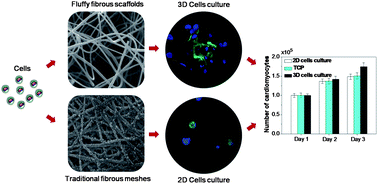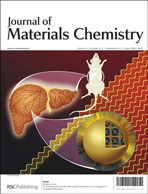Fabrication and characterization of a novel fluffy polypyrrole fibrous scaffold designed for 3D cell culture†
Abstract
Three dimensional (3D) cell culture in functional scaffolds to mimic the cell natural growth state is important for the construction of cell based implants in vitro for tissue engineering applications. Herein, we report a novel fluffy


 Please wait while we load your content...
Please wait while we load your content...